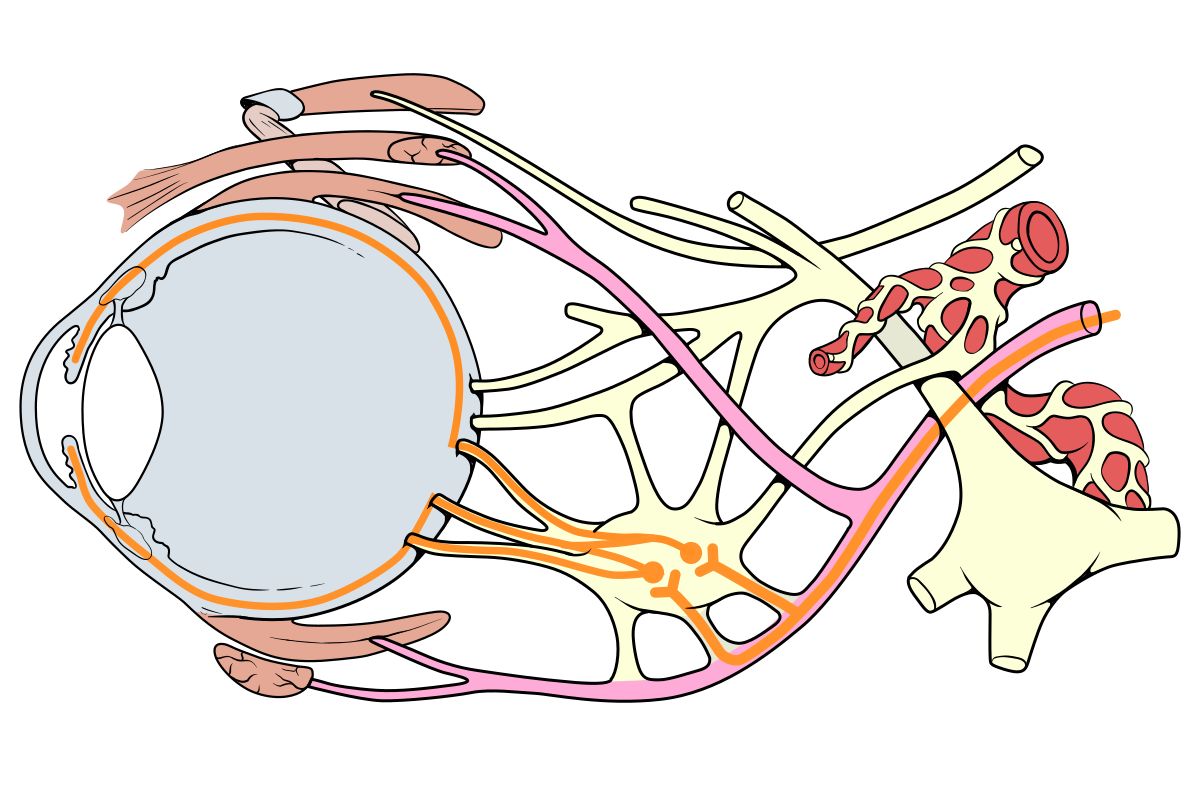
What is the oculomotor nerve? The oculomotor nerve is the third cranial nerve, responsible for controlling most of the eye's movements. It helps lift the eyelid, constrict the pupil, and adjust the lens for focusing. This nerve plays a crucial role in maintaining proper vision and eye alignment. Damage to the oculomotor nerve can lead to double vision, drooping eyelids, and difficulty moving the eye in certain directions. Understanding the oculomotor nerve's functions and potential issues can help in recognizing symptoms of nerve damage and seeking timely medical attention. Let's dive into 34 intriguing facts about this essential nerve!
What is the Oculomotor Nerve?
The oculomotor nerve, also known as cranial nerve III, plays a crucial role in eye movement and pupil response. It controls most of the eye's movements, including the constriction of the pupil and maintaining an open eyelid.
- The oculomotor nerve is the third cranial nerve.
- It originates from the midbrain, a part of the brainstem.
- This nerve controls four of the six muscles responsible for eye movement.
- It also manages the muscle that lifts the eyelid, known as the levator palpebrae superioris.
- The oculomotor nerve helps in adjusting the lens of the eye for focusing.
Functions of the Oculomotor Nerve
Understanding the functions of the oculomotor nerve can help appreciate its importance in daily activities like reading and driving.
- It controls the superior rectus muscle, which moves the eye upward.
- The inferior rectus muscle, controlled by this nerve, moves the eye downward.
- The medial rectus muscle, also under its control, moves the eye inward.
- The inferior oblique muscle, managed by the oculomotor nerve, helps in rotating the eye.
- It plays a role in the pupillary light reflex, causing the pupil to constrict in bright light.
Clinical Significance of the Oculomotor Nerve
Issues with the oculomotor nerve can lead to various eye problems, making it essential to understand its clinical significance.
- Oculomotor nerve palsy can cause double vision and drooping eyelids.
- Damage to this nerve can result in a condition called ptosis, where the upper eyelid droops.
- It can also lead to strabismus, where the eyes do not properly align with each other.
- An aneurysm in the brain can compress the oculomotor nerve, leading to nerve dysfunction.
- Diabetes can affect this nerve, causing diabetic neuropathy.
Diagnostic Methods for Oculomotor Nerve Issues
Diagnosing problems with the oculomotor nerve involves various tests and imaging techniques.
- A comprehensive eye exam can help detect oculomotor nerve issues.
- MRI and CT scans are often used to visualize the nerve and surrounding structures.
- Electromyography (EMG) can measure the electrical activity of the muscles controlled by this nerve.
- Blood tests can help identify underlying conditions like diabetes that may affect the nerve.
- Neurological exams assess the function of the oculomotor nerve and other cranial nerves.
Treatment Options for Oculomotor Nerve Disorders
Several treatment options are available for managing oculomotor nerve disorders, depending on the underlying cause.
- Corticosteroids can reduce inflammation affecting the nerve.
- Surgery may be necessary to relieve pressure from an aneurysm or tumor.
- Eye patches can help manage double vision caused by nerve palsy.
- Prism glasses can correct the alignment of the eyes.
- Physical therapy exercises can strengthen the eye muscles.
Interesting Facts about the Oculomotor Nerve
Here are some intriguing facts that highlight the complexity and importance of the oculomotor nerve.
- The oculomotor nerve is one of the shortest cranial nerves.
- It has both motor and parasympathetic fibers, making it a mixed nerve.
- The nerve's parasympathetic fibers control the constriction of the pupil.
- It is the only cranial nerve that controls more than one eye muscle.
- The oculomotor nerve can regenerate to some extent if damaged.
Historical Insights on the Oculomotor Nerve
The study of the oculomotor nerve has a rich history, contributing significantly to our understanding of neuroanatomy.
- Ancient Greek physicians were among the first to describe the oculomotor nerve.
- The nerve was extensively studied during the Renaissance, leading to detailed anatomical drawings.
- Modern neurology has advanced our understanding of the nerve's functions and disorders.
- Research on the oculomotor nerve continues to evolve, offering new insights into eye movement and neurological health.
Final Thoughts on Oculomotor
Understanding the oculomotor system is like unlocking a secret code to how our eyes work. This system, responsible for eye movements, plays a crucial role in everything from reading to driving. Without it, our ability to focus on objects, track moving targets, and maintain balance would be compromised. Knowing these 34 facts helps appreciate the complexity and importance of the oculomotor system. It’s not just about seeing; it’s about how we interact with the world. So next time you effortlessly follow a moving object or shift your gaze, remember the intricate dance happening behind the scenes. This knowledge not only enriches our understanding but also highlights the marvel of human biology. Keep these facts in mind, and you’ll never look at eye movements the same way again.
Was this page helpful?
Our commitment to delivering trustworthy and engaging content is at the heart of what we do. Each fact on our site is contributed by real users like you, bringing a wealth of diverse insights and information. To ensure the highest standards of accuracy and reliability, our dedicated editors meticulously review each submission. This process guarantees that the facts we share are not only fascinating but also credible. Trust in our commitment to quality and authenticity as you explore and learn with us.
